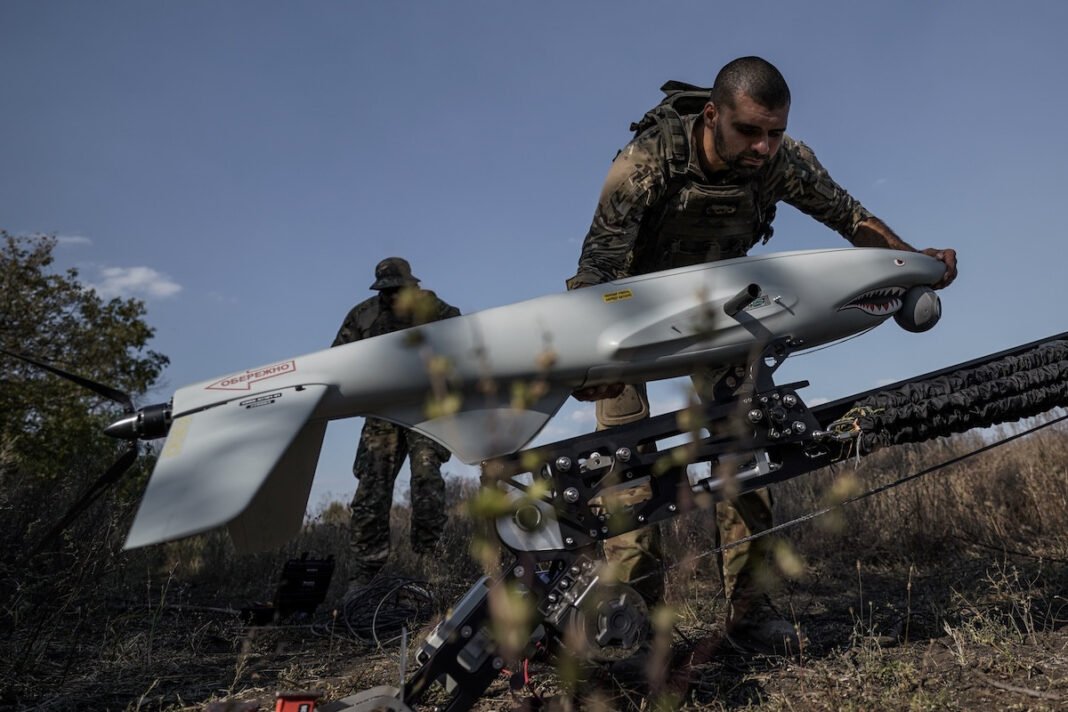Kyiv / Washington, July 18, 2025 — In a striking sign of shifting geopolitical and technological dynamics, Ukrainian President Volodymyr Zelensky has confirmed in an interview with The New York Post that Ukraine and the United States are finalizing a “mega-deal” involving a two-way arms exchange. Under the proposed agreement, the U.S. would purchase Ukrainian drones—battle-tested on the frontlines—while Ukraine would commit to buying a designated tranche of American weaponry.
Described by U.S. officials and analysts as potentially transformational, the deal underscores a growing recognition that America’s once-unquestioned military dominance in drone warfare is eroding. Experts warn that the U.S. currently trails behind Russia and China in unmanned systems technology, training, and operational integration. Ukrainian drones, forged in the fires of real-time war, may help fill that gap.
“We’re not giving American soldiers what they need to survive modern war,” said Trent Emeneker, head of the Pentagon’s autonomy program portfolio. “If we had to fight tomorrow—are we ready? No.”
The Post references a Times exposé detailing a four-day Pentagon training camp in Alaska, where U.S. troops reportedly failed to intercept targets, misfired drones, and in one case, mistakenly struck a friendly unit. The exercises highlighted alarming gaps in drone competency across the U.S. military.
In response, U.S. Defense Secretary Pete Hegseth recently ordered a drastic streamlining of drone development processes, citing production delays as a national security risk.
Ukraine’s Tactical Leap Forward
The push toward a formalized partnership follows a visit by U.S. Special Envoy Keith Kellogg to Ukrainian drone facilities. “I saw with my own eyes how these UAVs are designed and built—astonishing innovation, especially in this field,” Kellogg wrote on X, calling Ukraine a global leader in modern drone warfare.
The turning point in U.S. perceptions came after Ukraine’s Security Service (SBU) launched Operation Spiderweb in June, deep in Russian territory. Using pre-deployed drones, Ukraine struck Russian strategic bombers in real time—without deploying its own air force or conventional navy. The mission knocked out nearly a third of Russia’s long-range nuclear delivery fleet in a single blow.
The operation stunned the Pentagon and served as a wake-up call to Congress. It demonstrated how a “weaker” actor, with minimal resources but superior agility, could deliver disproportionate strategic damage using low-cost, high-impact technologies.
From Dismissal to Deal
The transformation in Washington’s stance toward Kyiv is striking. Just a few years ago, then-President Donald Trump famously dismissed Ukraine’s strategic relevance. Today, returned to office, Trump is personally greenlighting a weapons-for-drones deal with the very country he once tried to sideline.
The agreement symbolizes not just a new military partnership, but also a tectonic shift in global defense thinking. In this emerging era of drone warfare, brand names like Lockheed Martin matter less than real-world battlefield performance, adaptability, and cost-effectiveness.
By embracing Ukrainian systems, the U.S. is acknowledging a painful truth: its defense industry can no longer innovate fast enough alone. In contrast, Ukraine—born of necessity and sharpened in war—has emerged as a credible, cutting-edge force in the global military-tech market.
Beyond the Deal: A Strategic Pivot
This potential deal is more than transactional—it marks the beginning of a strategic, long-term partnership. It opens access to American defense investments, invites joint R&D efforts, and places Ukraine at the center of NATO’s next-generation military ecosystem.
In a world entering a full-blown drone arms race, Ukraine is no longer just a recipient of aid. It’s a supplier, a disruptor, and a global player in its own right.
And America, once dismissive, is now taking notes.




